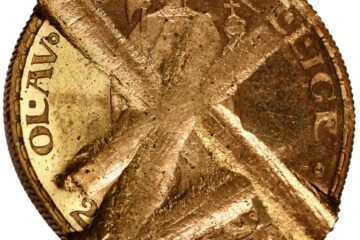The planning of the 4th edition was started with a public competition already in 1930. Six drafts from various artists and architects were rewarded and purchased by the central bank. After some thinking the bank never used these drafts, but instead hired architect Arnstein Arneberg as artist for the new banknotes. Arneberg was supported by a jury and Einar Forfang, who was the manager of the state-owned banknote printing company in Norway.
The banknote series with 1000, 500, 100, 50, 10 and 5 kroner were all in the same design programme. The obverse wore a significant Norwegian person from history, while the reverse had motifs illustrating different industries and scenes from Norwegian cultural life. The 5 kroner banknote had the Norwegian polymath and Nobel Peace Prize laureate Fritjof Nansen on the obverse side. Nansen is, for most people, probably better known for his polar expeditions. The reverse side of the banknote was a re-used painting by Axel Revold depicting a scene from the fishing industry in North Norway. One can see several men working with their fishing nets and in the background the fjord is filled with fishing boats.
On the banknote offered on Denarius there is written “final” (“sidste”) on the the side with no print. This pencil written word is very important as it gives us reason to think that this was the final draft before starting on the banknote production. This is a highly important piece in the Norwegian banknote history! And it is extremely rare – with this pencil text, maybe unique. On the top corners one can see small traces of tape, probably used for displaying the final draft. This is your once-in-a-life-time-opportunity to own a piece of Norwegian banknote history!



